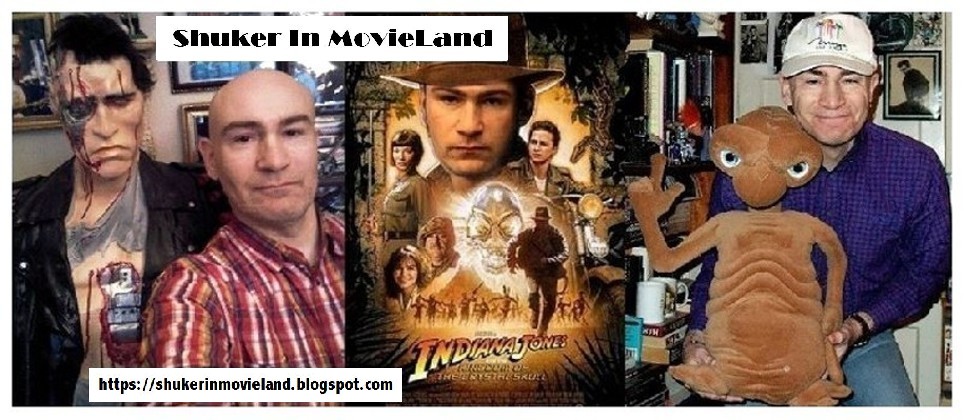On 26 June 2021, I finally ticked off another entry on my long list of cult movies that I've always meant to watch but never got around to doing so. For the movie that I'd just watched was none other than Psychomania.
Directed by Don Sharp, and released by Scotia-Barber in 1973 (retitled as The Death Wheelers in the USA), Psychomania is an (in)famously crazy UK comedy/horror film that created quite a stir back in the day, due to what was then considered by some to be its controversial storyline and casual depiction of anarchy. Nowadays, however, it is probably best remembered from a cinematic history point of view for being the last film in which George Sanders appeared before tragically taking his own life.
Psychomania's lead star is the late great Nicky Henson as Tom Latham, the ton-up, leathered-up leader of a violent biker gang called The Living Dead, who decides that they should take their name literally. So, having tricked his occultist mother (played by Beryl Reid) and toad-worshipping butler Shadwell (Sanders) into blabbing the secret of how to come back from the dead and live forever, Tom and his gang duly do so – following the minor inconvenience, that is, of having to render themselves deceased in the first place! This latter requirement features some scenes of a darker shade of black humour as each member in turn carries out a different method of dispatching himself or herself. Each member, that is, except for Abby (Mary Larkin), Tom's adoring girlfriend, who, to the disgust of the others, including Tom himself, decides that she actually enjoys living and has no wish to end her life in order to come back.
Abby notwithstanding, once immortal, Tom and the rest of the gang are free to terrorise and murder the local populace and police at will (the latter includes a somewhat pompous, self-regarding, but ultimately ineffectual chief inspector played by Robert Hardy), safe in the knowledge that nothing or no-one can harm them or stop them – or so they think. Unfortunately for them, however, Tom's mother knows differently, and albeit at great sacrifice to herself she decides to put a stop to their evil games, permanently. Let's just say that the climactic scene is petrifying - in every sense!
Whereas that scene is undeniably eerie, unsettling even, it does provide a very appropriate, memorable ending to the movie. In contrast, there is one scene that in my opinion is unnecessarily disturbing, and which for me definitely crossed the threshold between tongue-in-cheek comedy/horror and true horror.
That was when, following their coming back from the dead, the gang ride their motorbikes through a large store, creating havoc as they deliberately knock over displays, shattering glass and sending produce spilling in all directions – and, while doing so, sadistic female biker Jane Pettibone (Anne Michelle) sees a young woman pushing a pram with a baby inside, upon which she rides directly at them, causing the woman to fall over and the pram to career wildly before it too tumbles over. Mercifully, the fate of the poor baby inside it is not shown, but, like I say, this for me came across as truly disturbing, staying in my mind long after the movie had ended, yet adding nothing of worth to it, at least as far as I was concerned.
Psychomania was filmed in and around Shepperton Studios in Surrey, southern England. An integral aspect of this movie is a circle of standing stones named the Seven Witches, where the gang congregate, and within whose circle Tom is buried by them, sitting upright in full leathers and helmet astride his motorbike, only for him subsequently to burst up out of the ground riding it when he comes back from the dead, running down a startled walker in the process – the first of his several victims. Interestingly, although the stones were fictitious, following the film's release the location in Surrey where they were supposed to be as portrayed in it was visited by a number of fans in the hope of seeing them. The magic of the movies!
Psychomania is undoubtedly one of the all-out weirdest films that I have ever seen, and my compliments to Henson, Reid, Sanders et al., for so admirably keeping straight faces throughout it all (though I strongly suspect that there was plenty of corpsing amid the cutting-room floor's discarded footage!). But by the same token it is thoroughly engrossing, and if you're also a fan of late 60s/early 70s British motorbikes (especially BSAs), you're in for a rare old treat (apparently Henson signed his contract to star in it on the promise that the motorbikes to be ridden in it by him and the others would be Harley-Davidsons!). Moreover, by being so heavily and obviously tongue-in-cheek, as well as being entirely free of gore and true horror (aside from the pram scene), Psychomania can be readily enjoyed as a guilty pleasure.
Indeed, today it has achieved the status of a cult movie, albeit due in no small way to its iconic soundtrack, composed by John Cameron, mixing ethereal and psychedelic themes to notable effect, and including a very Woodstockian hippy-style ballad entitled 'Riding Free'. Sung by Harvey Andrews (but mimed by Miles Greenwood as gang member Chopped Meat in the movie), it is performed during Tom's funeral (click here to view this segment from the movie).
If you'd like to put my statement regarding Psychomania being a guilty pleasure to the test, this wonderfully mad movie can currently be viewed in its entirety for free on YouTube (just click here), or if you'd like a preview, click here to view an official trailer for it.
To view a complete chronological listing of all of my Shuker In MovieLand blog's other film reviews and articles (each one instantly accessible via a direct clickable link), please click HERE, and please click HERE to view a complete fully-clickable alphabetical listing of them.




